This article was co-authored by Zora Degrandpre, ND. Dr. Zora Degrandpre is a Natural Health Doctor and Licensed Naturopathic Physician in Vancouver, Washington. She is a grant reviewer for the National Institutes of Health and the National Center for Complementary and Alternative Medicine. She received her ND from the National College of Natural Medicine in 2007.
This article has been viewed 42,315 times.
Chamomile, particularly German chamomile, is a flowering plant that has a variety of medicinal uses. Taken orally or applied externally, it does show some success in treating minor skin conditions like dermatitis.[1] However, the evidence that it can treat fungal infections is only suggestive. It could work and does inhibit some fungal activity, but there are other proven treatments out there.[2] As an initial treatment, there’s no harm in trying chamomile to see if it works for you. Monitor your condition and if the infection doesn’t improve or gets worse, then make an appointment with a dermatologist for further antifungal treatment.
Steps
Ways to Take Chamomile
If you want to try chamomile to treat a fungal infection, then you have a few options for using it. It’s most effective if applied directly to the affected area, so using a tea bag or extract oil is the best choice. You can also try to take it internally as a tea or supplement. Remember, however, that chamomile isn’t the most effective treatment for fungal infections, so if your symptoms get worse, then contact a dermatologist for further treatment.
-
1Press a chamomile teabag against the affected area. This is a simple way to apply chamomile externally. Boil some water and steep the teabag. Let it cool off, then press it against the area for 10 minutes.[3]
- You can repeat this treatment 3-5 times per day and see if your symptoms improve.
-
2Apply diluted chamomile oil to the fungus. A dilution of 10% should be safe for application on your skin. Rub it onto the affect area and cover it with a bandage to prevent it from rubbing off.[4]
- If the oil comes undiluted, you can mix it with a carrier oil like olive or jojoba.
- Don’t apply undiluted essential oils to your skin. This could cause irritation.
Advertisement -
3Try whole-plant extract if oil doesn’t work. This is similar to chamomile oil, but contains pieces of the whole plant. Dilute it to 10% and rub it onto the fungus to see if it has any effect.[5]
-
4Take chamomile supplements for a systemic treatment. If topical applications don’t work or the infection is in a spot that’s hard to reach, like your groin, taking chamomile internally might work. Get a bottle of chamomile supplements from a health store and take them orally exactly as directed.[6]
-
5Drink chamomile tea for another internal option. Try steeping a tea bag for 5-10 minutes and drinking the tea. You can have 3-5 cups per day and see if this helps.[7]
- Chamomile tea is a lot weaker and less concentrated than oral supplements, so it might not be as effective.
Using Chamomile Safely
Chamomile is overall a safe ingredient and most people can use it without any problems. As with any supplement, however, there is a chance for side effects. Monitor your condition to catch any undesirable side effects like itching or inflammation. If you do experience problems, then stop using chamomile right away.
-
1Ask your doctor before you start taking chamomile supplements. Chamomile could interact with some medications, so never start using concentrated supplements without talking to your doctor to make sure it’s safe first.[8]
- Chamomile tends to interact with blood thinners like warfarin, so be especially careful if you take these medications.
-
2Stop applying chamomile if it causes any skin irritation. Some people have allergies to chamomile, so it can cause redness, itching, burning, and swelling if you use it. Stop drinking or applying it if you notice these issues.[9]
- Serious allergic reactions are very rare, but could happen. If you have any swelling in your throat or have trouble breathing, contact emergency services right away.
- You’re more likely to have an allergic reaction if you’re allergic to ragweed, chrysanthemums, marigolds, or daisies. If you’ve tested positive for these allergies, then it’s best to avoid chamomile.
-
3Avoid chamomile if you’re pregnant. It’s unclear how chamomile passes to unborn children, so avoid it altogether if you’re pregnant.[10]
-
4See a dermatologist if your infection gets worse. Since chamomile isn’t the most effective fungal treatment, it’s possible it won’t help your condition. If you’ve been treating the infection with chamomile for a week and see no improvement, or the infection gets worse, then see a dermatologist for treatment.[11]
Medical Takeaways
While chamomile does have a multitude of medicinal uses, its success in treating fungal infections is unconfirmed. It does inhibit some fungal growth, but studies haven’t shown that it’s effective for human fungal infections. It’s largely harmless to try, however, so you can apply it to the infection or take it internally and see if it works. Be ready to contact a dermatologist if the infection gets worse so you can have a professional antifungal treatment.
References
- ↑ https://www.ncbi.nlm.nih.gov/books/NBK92761/
- ↑ https://www.ncbi.nlm.nih.gov/pubmed/12176092
- ↑ http://abc.herbalgram.org/site/DocServer/CRCPRESSChamomile-Section_1.5978-1-4665-7759-6.pdf?docID=6362
- ↑ https://www.sciencedirect.com/topics/agricultural-and-biological-sciences/chamomile
- ↑ https://www.sciencedirect.com/topics/agricultural-and-biological-sciences/chamomile
- ↑ https://www.drugs.com/mtm/chamomile.html
- ↑ https://www.drugs.com/mtm/chamomile.html
- ↑ https://www.drugs.com/mtm/chamomile.html
- ↑ https://www.nccih.nih.gov/health/chamomile
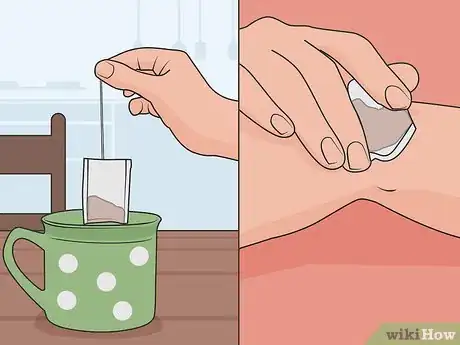

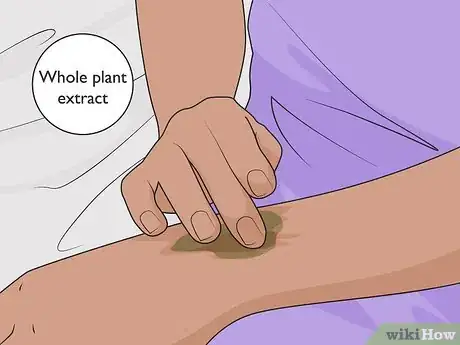
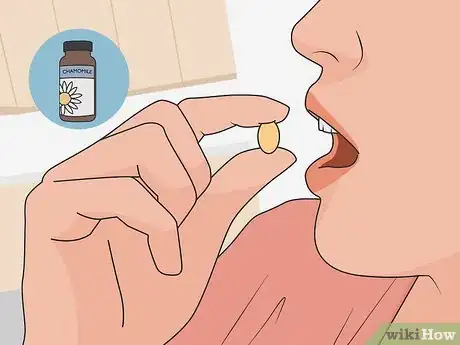


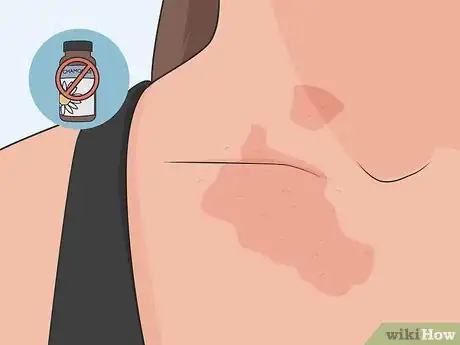

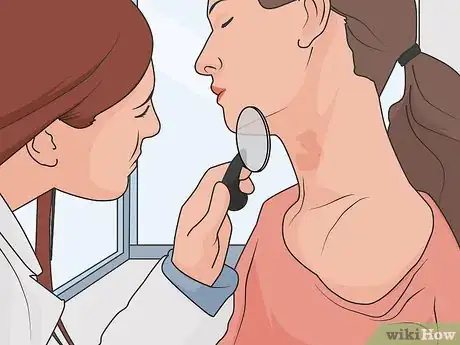























































Medical Disclaimer
The content of this article is not intended to be a substitute for professional medical advice, examination, diagnosis, or treatment. You should always contact your doctor or other qualified healthcare professional before starting, changing, or stopping any kind of health treatment.
Read More...